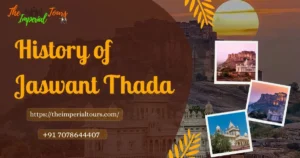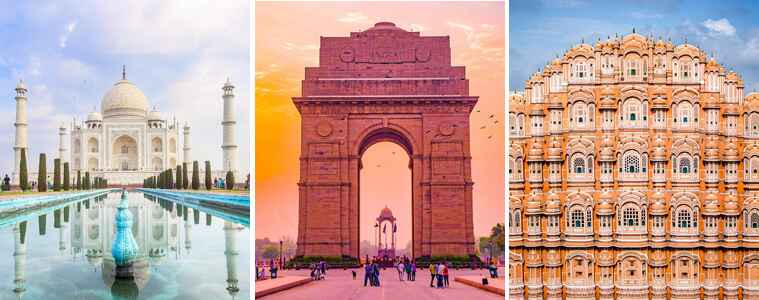Introduction
Khari Baoli Market – a bustling and vibrant spice market nestled in the heart of Old Delhi – stands as a testament to the city’s rich history and cultural heritage. The market has a mystical charm that draws both locals and tourists alike to explore its narrow alleys, laden with a kaleidoscope of aromatic spices. In this article, we embark on a journey to discover the age-old secrets of Khari Baoli Market, delving into its fascinating past and understanding its significance in the spice trade.
1. The Origins of Khari Baoli Market
To understand the age of Khari Baoli Market, we must travel back in time to the 17th century, during the Mughal rule in India. It was during this period that the market first began to take shape. The name “Khari Baoli” is derived from the word “khara,” meaning salty, and “baoli,” referring to a step-well. This suggests that the area around the market might have been close to a step-well, providing essential water for the trade and the community.
2. Tracing the Centuries
Over the centuries, Khari Baoli Market evolved from a small local market to become one of the largest spice markets in Asia. As trade flourished along the ancient Silk Road and maritime routes, spices from far-off lands found their way to this vibrant marketplace, enriching its offerings and reputation.
3. The Influence of the Mughals
During the Mughal era, Khari Baoli Market gained significant importance due to the Mughals’ fascination with spices and their use in culinary delights and fragrances. The Mughal emperors were known for their grand feasts, and spices played a central role in creating the elaborate and exotic dishes that adorned their tables.
4. Legacy of the British Raj
The arrival of the British in India in the 17th century brought about changes in trade patterns, including the spice trade. The British sought to control the spice market, leading to new regulations and policies that affected merchants in Khari Baoli Market. However, despite these challenges, the market continued to thrive and adapt, preserving its essence and traditional methods of trade.
5. Architecture and Heritage
The architecture of Khari Baoli Market itself bears witness to its antiquity. The narrow lanes, arched doorways, and aged facades exude an old-world charm, reflecting the architectural style prevalent during the Mughal era. These structures have stood the test of time, withstanding the forces of urbanization and modernization that have transformed the surrounding landscape.
6. The Spice Trade through the Ages
For centuries, Khari Baoli Market has been a vital hub in the spice trade network, connecting India to distant lands. Spices like cardamom, cinnamon, cloves, and pepper were in high demand, enticing traders and merchants from various cultures to converge at this bustling market. The aroma of these spices wafted through the air, creating an enchanting atmosphere that lingers to this day.
7. Cultural Melting Pot
The market’s historical significance extends beyond trade and commerce. Khari Baoli Market has served as a melting pot of cultures and communities, reflecting the cosmopolitan nature of Delhi. Generations of traders, artisans, and merchants from different parts of India and beyond have contributed to the market’s rich tapestry of diversity.
8. The Spirit of Resilience
Through the trials of time, Khari Baoli Market has showcased its spirit of resilience. From political changes to economic shifts, the market has weathered various storms, always bouncing back stronger than before. The dedication and determination of the merchants have kept the age-old traditions alive, ensuring that the market remains a treasure trove of spices for generations to come.
9. Modern-day Relevance
In the present day, Khari Baoli Market continues to thrive as a vital center for spice trade in India. Its enduring legacy and cultural significance attract not only buyers and traders but also tourists seeking an authentic glimpse into India’s rich heritage. Visitors are captivated by the vivid colors, exotic aromas, and the animated ambiance of the market.
10. Preserving the Past for the Future
Preserving the ancient charm of Khari Baoli Market is a shared responsibility. Authorities and conservationists have undertaken efforts to protect the market’s heritage and prevent its architectural decline. By striking a balance between modernization and preservation, they aim to safeguard the essence of the market while catering to the needs of the evolving city.
Conclusion
Khari Baoli Market stands as an illustrious symbol of Delhi’s past and an enduring testament to its vibrant present. For centuries, this iconic spice market has been a bustling center of trade, a melting pot of cultures, and a custodian of India’s spice heritage. As we wander through its age-old lanes, we can’t help but be enchanted by the fragrant journey that spans centuries and continues to captivate hearts and minds today.
FAQ:
What is the history of Khari Baoli?
What is Khari Baoli famous for?
Who invented Khari Boli?
Which is the biggest baoli in India?
Useful Links:
Agra Mathura Vrindavan Tour by Car
Taj Mahal Sunrise Tour by Car from Delhi
Same Day Taj Mahal Tour by Car from Delhi
Same Day Taj Mahal Tour by Superfast Train from Delhi
Same Day Jaipur Tour by Car from Delhi
Best Delhi Overnight Tour
Golden Triangle Tour with Tiger Safari from Delhi
Golden Triangle Tour with Royal Rajasthan from Delhi
Golden Triangle Tour with Udaipur from Delhi
Golden Triangle India Tour Packages
Best Day Tour Packages of India in 2023








